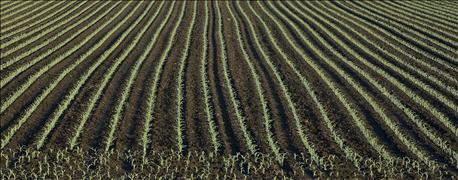April 13, 2016

Without a major change in grain and dairy markets, 2016 will be one of the most challenging years to Wisconsin farmers from an economic standpoint. Low prices for all major crops and milk is restricting income on most farms. As the growing season approaches, investments in crop inputs are ramping up from seed, chemical, land rent, and fertilizer. A few strategies to consider involving fertilizer and soil nutrients can stretch and possibly save a few dollars as we head into a challenging financial year.

Making the most of the fertilizer dollar
It might be tempting to limit or eliminate lime application in a tough cash flow year. The addition of lime and keeping soil pH at a near recommended level enhances to availability of other nutrients. Recommended targeted pH levels are 6.8 for alfalfa, 6.3 for soybeans, and 6.0 for corn. Adding lime to keep soil pH near 6.0 for most other crops and 6.5 for alfalfa will not limit yield drastically. Liming to these levels keeps pH adequate and will allow for lower lime application rates.
If you have manure, treat it like a fertilizer and take the nutrient credits it provides. The nutrient credits in manure vary by type so it is important to identify the type of manure being applied. A more solid type manure will generally have less nutrient content on a per ton basis than liquid manure has on a per gallon scale. Phosphorous and potassium needs and a big portion of the nitrogen needs can be met with manure nutrient credits. Soil test phosphorous levels will drive how much manure can be applied to fields. If soil test phosphorous and potassium levels are in the high or excessively high range, consider not applying these nutrients to these fields. Legume credits provide an ample amount of nitrogen and need to be considered and taken in 2016. A good stand of alfalfa can provide up to 190 pounds of nitrogen for the subsequent crop. If quality hay is available and in ample supply or inventory, this could be a year to rotate more acres out of alfalfa and into corn to take advantage of the legume credits and reduce the purchased nitrogen needs.
One positive going into the growing season is that fertilizer prices are the lowest they have been in several years. This does not help when commodity prices are also low. If legume and manure nutrient credits are used, the next step is to determine what the targeted nitrogen rate for corn should be. Extension nitrogen recommendations are based on soil type and the nitrogen: corn price ratio. Current ratios are running in the 0.10 to 0.15 range which changes the recommended nitrogen by 15 to 20 pounds per acre. To use the nitrogen : corn price ratio, contact your county Extension agent.
One more fertility component to consider is to use the recommended rate of phosphorous and potassium on all fields whose soil test phosphorous and potassium are optimum or lower. This will maximize the return to these applied nutrients. Whether applied at planting in the row or as a broadcast application, the biggest bang for the dollar regarding phosphorous and potassium will be felt on lower soil test fields.
Regarding alfalfa and other forages where potassium is needed following harvest, consider applying about 75% of the recommended rate. By reducing the rate to this level, an adequate amount of potassium will be replaced at a lower cost. Another strategy is to split the application between harvest after first crop and harvest after the last crop. This will stretch out the need to pay out a larger potassium bill early and provide adequate protection going into next winter.
Some of the last nutrients to prioritize in a tough financial year are secondary and micro nutrients. The need for nutrients such as boron, sulfur, calcium, and magnesium may need to be reduced or eliminated if these have been applied in recent years. These nutrients are essential and don’t rate as high in a riskier year as much as lime, nitrogen, potassium, and phosphorous do.
Finally, this is not the year to look for and invest in the “silver bullet” nutrient which will “guarantee” a certain amount of yield increase. These products are best experimented on a limited acreage to see how they perform on the farm and ideally in a year with more flexibility in the crop budget.
A limited amount of dollars are available for inputs into the cropping system in 2016 and prioritizing a few soil fertility costs can help meet the margin.
Clark is the Chippewa County Extension crops and soils agent.
You May Also Like




